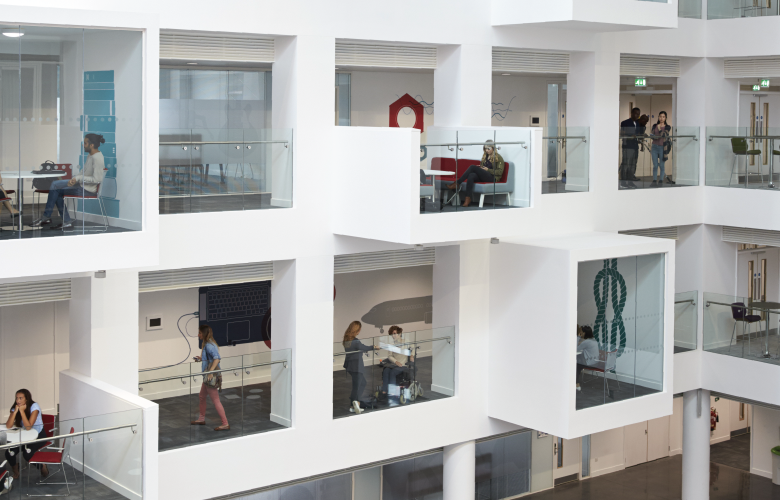Colliers International released a new report Changing Dynamics: Implications of New Occupier Profiles for Property Owners. This research paper examines how changes in occupier profiles are impacting investment strategies for commercial property owners.
At a glance:
- Tech, media and telecoms (TMT) groups and Flexible workspace operators are key drivers of demand for Asian CBDs 2017-2018
- TMT groups occupy 18% of prime office space in Asian CBDs, flexible workspace 5%
- Occupiers increasingly value flexibility, space efficiency and ambient experience
- Property owners need to adapt to changing occupier profiles through building design, accepting shorter leases and investing in more amenities
- Flexible workspace has proven a valuable tool for revitalising Grade B office buildings in Hong Kong among other markets
New occupier sectors well established in Asia
Terence Tang, Asia Managing Director of Capital Markets and Investment Services at Colliers, commented: “Asian CBD areas have historically been dominated by finance. However, technology, media and telecoms (TMT) groups and flexible workspace operators were key drivers of demand over 2017-2018. TMT groups now occupy about 18% of prime office space in Asian CBDs, and flexible workspace 5%, while in 2018 TMT and flexible workspace together accounted for between 11% and 75% of prime grade absorption in the major CBDs that we track. Growth in these sectors may slow but is unlikely to reverse.”
Changing occupation profiles in London and the US
The expansion of technology and flexible workspace sectors in Asia mirrors global trends, and in some respects, Asia is moving faster than major urban markets in Europe and the US. The TMT sector has been a key driver of growth in London’s office market, representing over 10% of total stock in London at end-2018, largely driven by the expansion of big tech: Google, Facebook, Amazon and Apple. The example of London is believed to be especially relevant to another traditional financial centre in Asia, Hong Kong.
In Colliers’ “Top Locations in Asia – Technology Sector” report (19 September 2018), it was mentioned that Hong Kong is becoming more exciting as a tech centre for several reasons. These include proximity to Shenzhen and South China; recent expansion in the city by social media leaders like Facebook and Alibaba; and accelerating investment in fintech, including planned expansion by major banks like JP Morgan.
On the other hand, the growth of the flexible workspace sector in the US suggests property owners are responding to the demand. In the US, flexible workspace has accounted for one-third of urban office leasing in the last 18 months. As in Asia, operators are shifting focus to target larger corporations and enterprise clients.
Jonathan Wright, Head of Flexible Workspace Services Asia at Colliers, commented: “Flexible Workspace is impacting traditional leasing models and firms’ occupation portfolios. The concentration of coworking is almost twice as great in tech-driven markets as in other markets. Coworking is also clustered in high-wage cities and markets with a high concentration of professional services firms.”
Whilst flexible workspace (referring to coworking and serviced offices) still represents only about 5% of aggregate occupancy of Grade A office space in Asia, the proportion would probably be higher if Grade B space were included, since flexible workspace has proven a valuable tool for revitalising Grade B office buildings in Hong Kong among other markets. Overall, flexible workspace continues to expand across Asia.
Changing trends in workplace and building design
Andrew Haskins, Executive Director, Asia Research at Colliers, added: “In addition to changing occupier profiles, patterns of workplace organisation and design are evolving. Occupiers in general increasingly value flexibility, efficiency of space use and ambient experience.”
In practice, two new forms of flexible workplace layout have emerged. One approach is activity-based working (ABW), which has a strong emphasis on use of space for activities aligned with work functions. The other approach is agile working, a concept based on an organisational structure involving “squads” or multidisciplinary teams, which are intended to be nimble and hence capable of reacting rapidly to changing client demands.
In addition to changes in workplace layout, the new profiles of office occupiers also appear to be driving certain changes to building design, including 1) easy access to experience and entertainment; 2) dual or multiple entrances; 3) reduced needs for large, temperature-controlled IT spaces within a building; and 4) generous provision of horizontal plenum spaces for relaxation.
New occupation profiles: Implications for owners
Mr. Tang commented: “In our view, going forward, commercial developers need to provide more flexibility in floor design, building configuration and specifications. For developed properties, active asset and lease management is required on the part of commercial property owners to incorporate flexibility, short-term needs, enhanced tenant experience and provision of more amenities. Investors have to consider these changing tenant needs in their commercial investment strategies.”
Click here to download Colliers International Changing Dynamics: Implications of New Occupier Profiles for Property Owners
Similar to this:
Knight Frank launches 2019 Wealth Report
Manila leads Knight Frank’s Prime International Residential Index - Wealth Report 2019
Savills' local experts give an update on Vietnam markets in 2018









